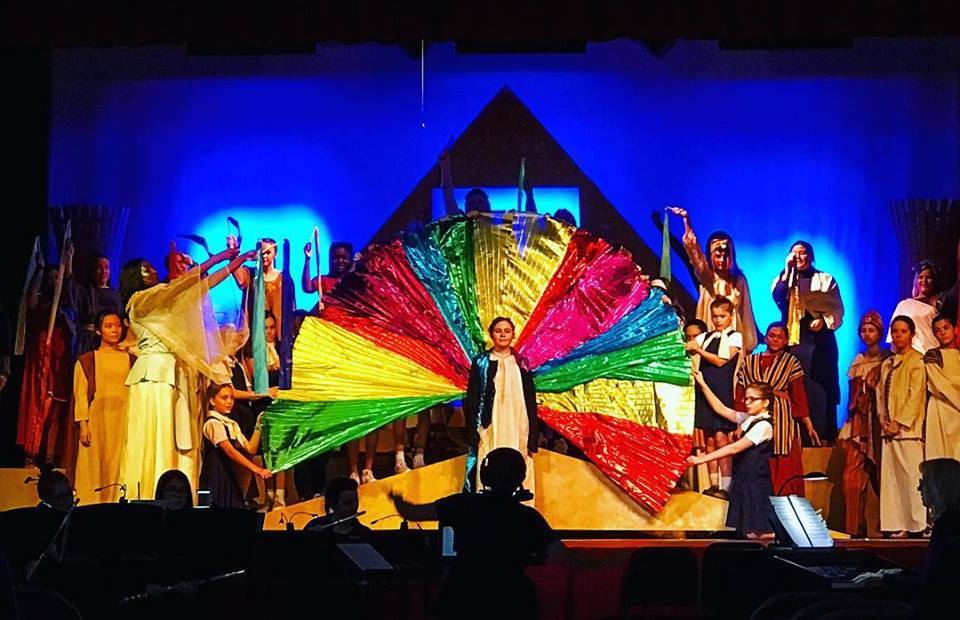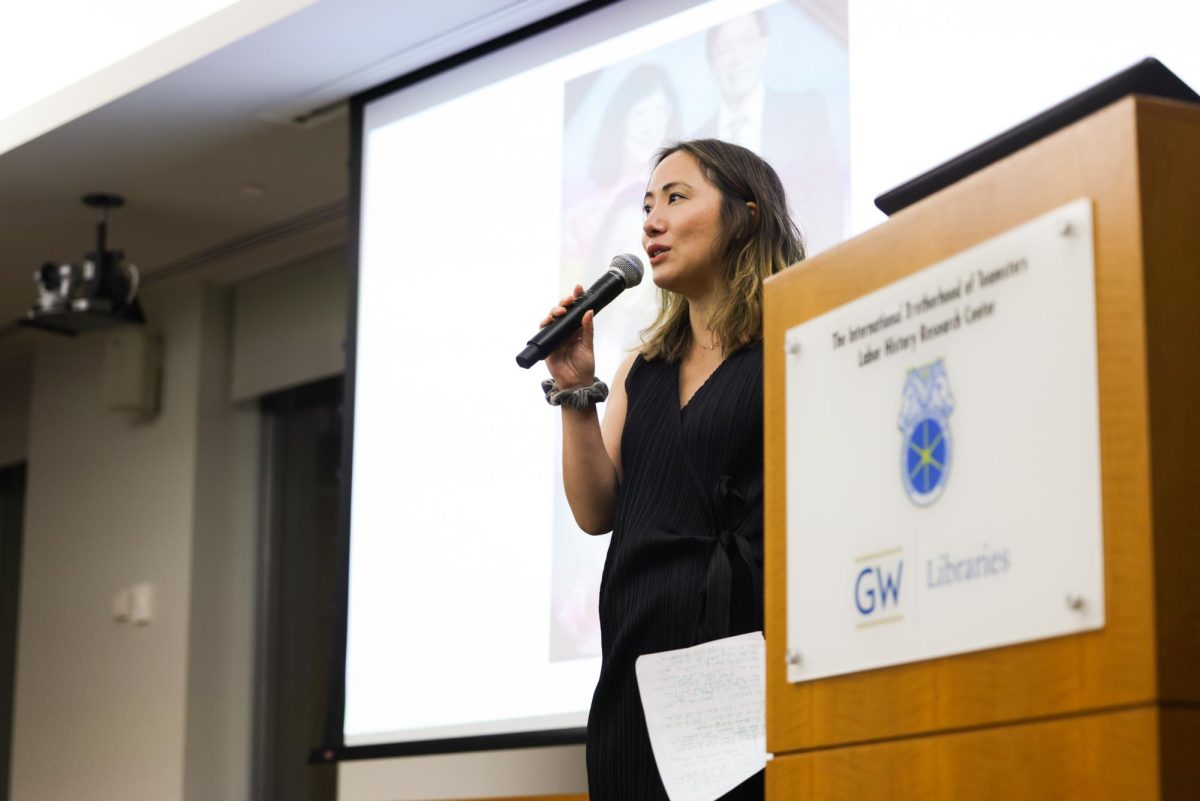Imagine walking into a room filled with 25 flat-screen TVs with ultra-high definition and surround sound – all playing different movies on full blast. That’s how a doctoral student studying special education and disability described how people with autism experience sensory overload.
For many people with autism, especially children, a night at the theater would only exacerbate this disorder. To mitigate that experience, the Connelly School of the Holy Child in Potomac, Md. adjusted its annual musical Saturday with the help of Carrie Gillispie, a doctoral candidate in the Graduate School of Education and Human Development. The school kicked off their run of “Joseph and the Amazing Technicolor Dreamcoat” with a sensory-friendly show and will continue the performances this weekend.
“For a lot of these kids and families that come to the sensory show, it’s their first time ever going to a theatre show,” Gillispie said. “A lot of times parents feel that going to a typical theatre show would be too challenging or that they feel disruptive and not as welcome, so we just try to make it as welcoming as possible.”
Gillispie – who volunteers as a part-time theater coach at the school – said she wanted to accommodate children and young adults from the community with sensitivities. The all-girls middle and high school has offered sensory-friendly shows for the past two years and decided to showcase it again this year with Gillispie’s help.
To make the production more approachable, the tech crew toned down any jarring light and sound effects and made sure the actors’ voices weren’t too loud. The house lights were kept on during the performance and the audiences’ seats are spaced out so that anyone can move about freely. Tickets to the show were free-of-charge and the show was cut by about 30 minutes to make it less than an hour in length.
Gillispie is a performer and singer herself, so she said this was a great opportunity for her to blend theater with her expertise in disabilities. She was inspired to study and work in special education after noticing a big difference in the quality of services available at schools for children with intellectual disabilities.
[gwh_image id=”1050429″ credit=”Courtesy of Sonya Payne” align=”right” size=”embedded-img”][/gwh_image]
“It’s important to actually apply what we know and put it into practice,” she said. “I’ve studied in graduate classes what should be done but it’s not really happening all the time in the classroom.”
While sensory-friendly shows and art are becoming more popular, they are still rare, she added. Broadway has produced sensory-friendly shows in the past – like The Lion King, Aladdin and The Phantom of the Opera – and the Kennedy Center has a sensory-friendly concert coming up this April.
But the School of the Holy Child was the first high school in the area to offer shows like this.
Before the show began, the actors all came out and introduced themselves to the children as themselves and the character they were playing, allowing for the kids to better distinguish between what is real and imaginary on stage. After the show, the actors came out to meet with the children and answer any questions.
Gillispie also set up a “quiet room” outside the play which allows for children and their families to escape if they needed a minute to calm down if something upsets them during the show. The room featured bean bag chairs and is insulated from the commotion of the performance.
In addition, Gillispie worked with the students to create a “social story” handout. The story is a play-by-play showing students how the theater will look, who the actors will be, where they can go if they are feeling overwhelmed and what appropriate theatre behaviors are, like clapping and singing. After reading the social story, kids are more comforted because they feel more prepared, she said.
To make all of this possible, Gillispie relied heavily on the high school students to develop and implement the modifications. Before the production, she met with the cast and crew to discuss the purpose for a sensory-friendly performance and the methods to make it happen.
“Because Holy Child is not a special education school, it was important to teach them about special education, sensory overload and autism,” Gillispie said. “I really emphasized that it’s important when you’re trying to learn about someone else’s experience to learn directly from the person with the disability.”
More than 100 people attended the performance at the Connelly School of the Holy Child’s theater Saturday and Gillispie said each year there seem to be more families than the previous year.
“They really get into it and they really care,” she said.
The School of the Holy Child will be putting on their full-length version of “Joseph and The Amazing Technicolor Dreamcoat” Friday at 7 p.m. and Saturday at 3 and 7 p.m.




